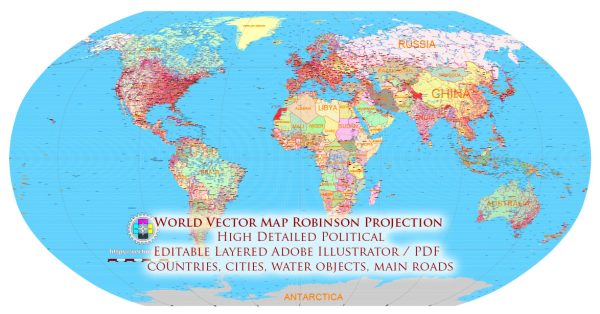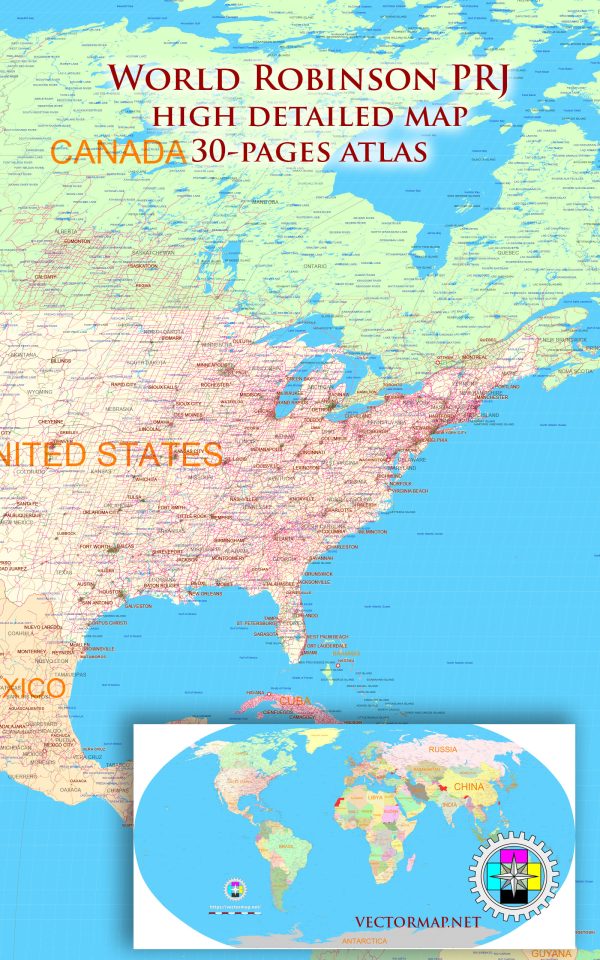The Robinson projection is a map projection of a world map which shows the entire world at once. It was specifically created in an attempt to find a good compromise to the problem of readily showing the whole globe as a flat image.
The Robinson projection was devised by Arthur H. Robinson in 1963 in response to an appeal from the Rand McNally company, which has used the projection in general-purpose world maps since that time. Robinson published details of the projection’s construction in 1974. The National Geographic Society (NGS) began using the Robinson projection for general-purpose world maps in 1988, replacing the Van der Grinten projection.[2] In 1998 NGS abandoned the Robinson projection for that use in favor of the Winkel tripel projection, as the latter “reduces the distortion of land masses as they near the poles”



 Author: Kirill Shrayber, Ph.D.
Author: Kirill Shrayber, Ph.D.